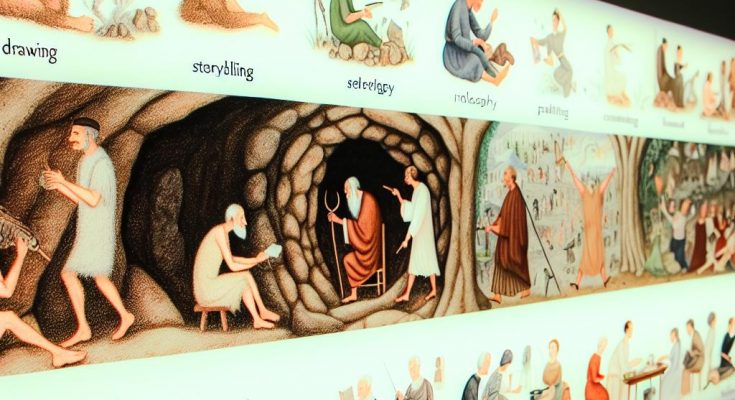Introduction to Hobbies and Leisure Time
Throughout history, the concept of leisure and hobbies has evolved alongside cultural and societal changes. A hobby is typically defined as an activity done for pleasure during one’s free time. As societies developed, so did the ways in which people chose to occupy themselves in their leisure hours. This exploration gives us insights into past lifestyles and societal priorities.
Ancient and Medieval Hobbies
In ancient civilizations, leisure was often reserved for the elite. For instance, in ancient Greece, philosophical discussions, competitive sports, and arts like theater and music were common forms of pastime. These activities were not just for entertainment but were deeply embedded in the cultural and religious fabric of the time. The Olympic Games originated as both a religious festival and an entertainment hub that had massive cultural importance. They celebrated athleticism and human achievement, and participants trained rigorously, signifying the value placed on physical prowess and competition.
Roman society, on the other hand, was heavily influenced by Greek traditions but expanded leisure activities to include gladiatorial games, chariot racing, and public baths. While these pursuits may seem barbaric today, they were a crucial part of Roman life, emphasizing socialization and public spectacle.
During the Medieval era, hobbies became slightly more varied due to the expansion of both commercial markets and social classes. Nobility engaged in pursuits such as hunting, falconry, and tapestry making, reflecting their access to resources and leisure time. Hunting was not only a noble pursuit but a vital skill for food acquisition in some regions. Meanwhile, peasants might enjoy simpler entertainments like music, storytelling, and various forms of games. These activities were often communal, emphasizing the importance of community and oral traditions in a largely illiterate society.
Renaissance and Enlightenment Periods
With the Renaissance came a heightened focus on the arts and sciences. This shift led to a transformation in the nature of hobbies, steering them toward intellectual pursuits. Literacy rates began to rise, and with them, reading became a common hobby among those who had access to books. The printing press revolutionized access to knowledge, fostering a culture of learning and inquiry.
Exploration and an increased understanding of the world fueled interests in map-making, collecting exotic artifacts, and studying natural philosophy. These activities were not limited to elite circles; an emerging middle class with rising economic power could also engage in these pursuits. The Enlightenment further encouraged rational thought and the pursuit of knowledge, influencing hobbies that involved scientific inquiry and exploration. Individuals sought to understand the world through study and experimentation, leading to the dissemination of scientific ideas and fostering a sense of curiosity that would propel later technological advancements.
The Industrial Revolution and Modern Hobbies
The Industrial Revolution drastically altered people’s lives, including how they spent their free time. Urbanization and technological advances produced a new middle class with more disposable income and leisure time. This period saw the rise of organized sports, gardening, and hobbies that reflected technological advancements, such as photography. Photography allowed people to capture and document their lives, preserving memories and events in a way previously unimaginable.
The 20th century introduced an era of mass entertainment, encompassing cinema, radio, and television. These forms of media transformed leisure time into both personal and shared experiences as people gathered to watch films or listen to broadcasts. The rise of personal vehicles and improved infrastructure facilitated the hobby of travel, making weekend getaways and longer vacations more accessible to more people. This shift allowed individuals to explore new places, cultures, and experiences, expanding their horizons and social understanding.
Digital Age and Contemporary Hobbies
The late 20th and early 21st centuries have been marked by the digital revolution, which introduced new hobbies such as video gaming, blogging, and social media interaction. These activities represent significant cultural shifts as they facilitate connections across vast distances, allowing people to share experiences and information instantaneously. Video gaming, once considered a niche activity, has become a dominant form of entertainment, with complex narratives and communities forming around various game genres.
Digital tools have also transformed traditional hobbies, offering platforms for activities like virtual gardening and crafting. These platforms increase accessibility, allowing individuals to pursue interests without specific physical resources or locations. Online courses and communities make it easier than ever to learn new skills or share experiences, connecting friends or like-minded individuals globally. These digital connections highlight a global culture in which geographical boundaries are less significant in the formation of communities.
Each era’s hobbies reflect broader societal trends, technological advancements, and cultural shifts. They provide insight into the values and aspirations of the people during those times. Understanding the history of hobbies can give us a unique perspective on how human lifestyle and civilization have progressed. As technology continues to develop, it will be fascinating to see how future societies will shape their leisure activities, reflecting new cultural, economic, and technological landscapes. Through this examination, we understand that while the activities may change, the fundamental human desire to explore, create, and connect remains a constant throughout history.





